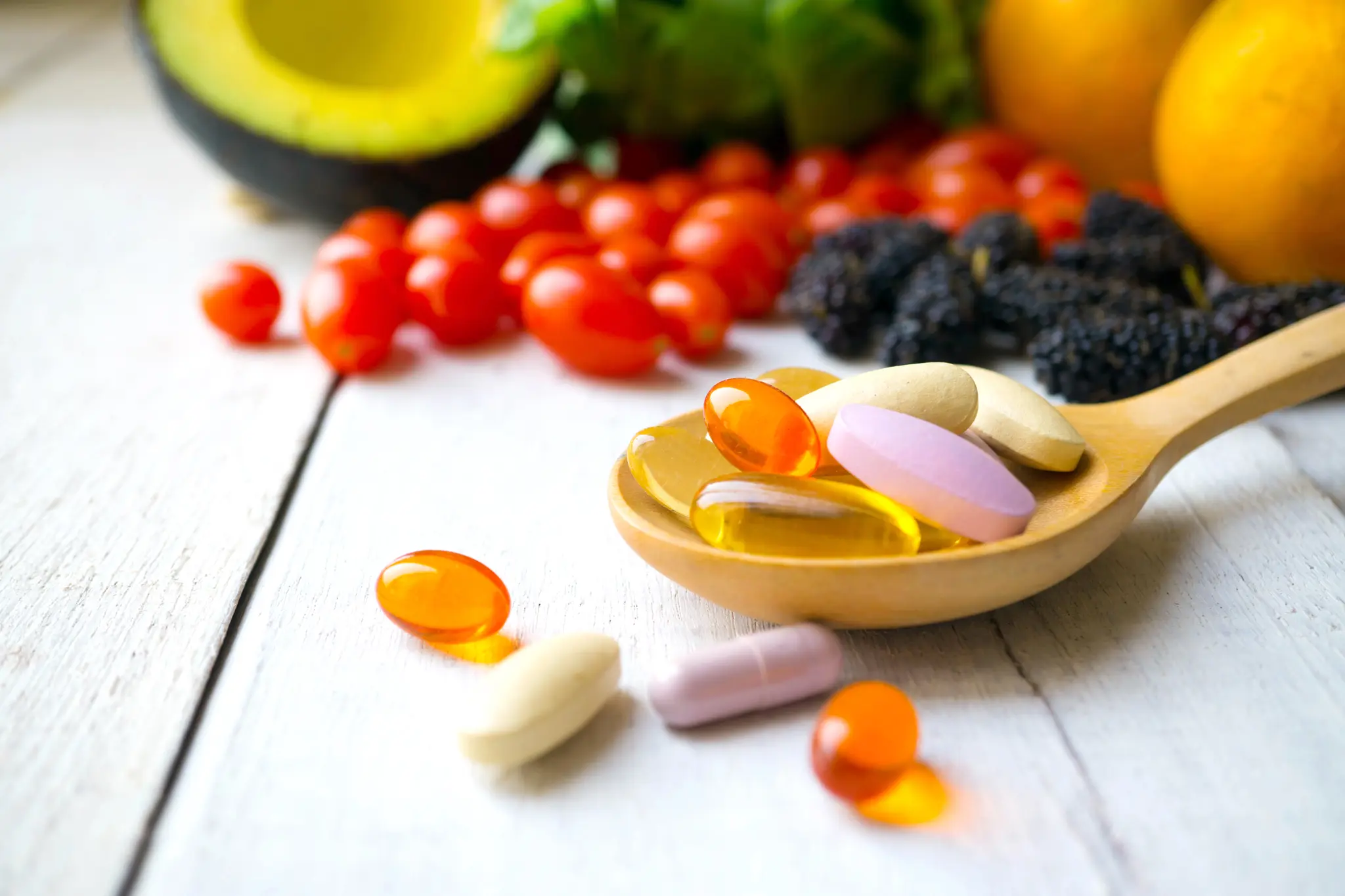Metal exposure and toxicity are growing health concerns, particularly for children whose developing bodies can be more vulnerable to their harmful effects. Various metals, such as lead and mercury, can find their way into a child’s body through sources like contaminated soil, household dust, water, or food. These metals can potentially cause a range of adverse health effects, from developmental delays to more severe neurological and cognitive issues.
Detoxifying the body from heavy metals is a complex process and requires an approach that is safe and effective for children. A metal detox for kids typically involves dietary adjustments, the inclusion of specific nutrients that support the body’s natural detoxification processes, and reducing exposure to prevent further metal accumulation.
Healthcare professionals emphasize the importance of a carefully considered detoxification protocol for children, as their bodies cannot tolerate the levels of intervention that might be appropriate for adults. Parents and caregivers looking to support their child’s health must seek guidance from qualified practitioners to ensure a metal detox plan is tailored to the child’s unique needs and is both gentle and non-invasive.
Reader's Roadmap
Understanding Heavy Metal Toxicity in Children

Heavy metal toxicity in children is a serious health concern. It involves the accumulation of heavy metals in young bodies, leading to various health complications.
Definition and Types of Heavy Metals
Heavy metals are dense elements that can be toxic to humans, even in low concentrations. Children are particularly susceptible to the harms of heavy metals such as lead, mercury, arsenic, and cadmium. These metals are naturally occurring in the environment but can become concentrated due to industrial activity and pollution.
Common Sources of Exposure
Exposure to heavy metals can occur through numerous avenues:
- Air: Industrial emissions can release heavy metals into the atmosphere.
- Water: Lead pipes, or industrial waste, may contaminate drinking water supplies.
- Soil: Contaminated soil can be a source through direct contact or consumption of produce grown in such soil.
- Diet: Certain foods, specifically some fish, rice, and fruits and vegetables, may contain high levels of heavy metals.
Symptoms of Heavy Metal Toxicity in Children
Symptoms can vary depending on the specific metal and level of exposure. However, common symptoms include:
- Cognitive and developmental delays
- Behavioral problems
- Nausea and vomiting
- Diarrhea
Symptoms are often subtle and can be mistaken for other health issues, which emphasizes the need for vigilance and testing when exposure is suspected.
Risks and Long-Term Health Implications
Heavy metal toxicity poses significant risks:
- Neurological: Intellectual disabilities and behavioral disorders.
- Physical: Kidney damage, and disrupted growth and development.
Long-term health implications can extend into adulthood, making early detection and intervention crucial to minimize potential lifelong consequences.
Diagnostic Approaches

The detection of metal toxicity in children requires precise diagnostic measures. Proper testing can identify the presence and concentration of heavy metals in the body, guiding treatment decisions.
When to Consult a Doctor
Parents and caregivers should consult a physician if a child exhibits symptoms such as developmental delays, behavioral changes, or any unusual symptoms that may suggest metal toxicity. A doctor can evaluate these symptoms, consider potential environmental exposures, and determine if testing is warranted.
Blood, Urine, and Hair Analysis
- Blood Tests: Blood samples are often used to detect acute metal exposure. Elevated levels of lead, mercury, or other metals can indicate recent exposure and toxicity.
- Urine Tests: Urine analysis helps assess the body’s excretion of metals and is commonly used in conjunction with chelation therapy to monitor treatment efficacy.
- Hair Analysis: Provides a longer-term record of metal exposure. While less commonly used than blood or urine tests, hair samples can reflect the accumulation of metals over time.
Interpreting Lab Tests for Toxicity
Interpreting the results of lab tests is complex and should be done by a qualified health professional. They must consider the reference ranges for metal concentrations and the clinical context, including the child’s:
- Symptoms: Specific symptoms linked to metal exposure should align with lab findings to confirm a diagnosis.
- Chelation Therapy: If undergoing chelation—a treatment to remove heavy metals—regular lab tests are pivotal to monitor its effectiveness and adjust doses accordingly.
Methods of Heavy Metal Detox for Kids

Implementing heavy metal detoxification for children involves specific, age-appropriate strategies. The most effective methods combine dietary interventions, targeted supplementation, medical chelation therapy, and mindful lifestyle modifications.
Dietary Interventions for Detox
Balanced Diet: Ensuring children consume a balanced diet rich in antioxidants supports the body’s natural detoxification processes. Foods such as leafy greens, berries, and nuts are high in antioxidants which can help mitigate oxidative stress.
Organic Produce: Including organic produce in meals reduces exposure to pesticides and chemicals that can contribute to the body’s toxic load. Organic fruits and vegetables are recommended to limit ingestion of additional heavy metals and toxins.
Supplementation Strategies
Probiotics: Adding probiotics to a child’s diet can enhance gut health, which plays a critical role in detoxification. Healthy gut flora aids in the elimination of toxins and heavy metals through the digestive system.
Detox Supplements: Certain detox supplements can be beneficial, but they should be used with caution and under a healthcare provider’s supervision. Supplements such as cilantro, garlic, and chlorella are suggested to have properties that support detoxification, but appropriate dosages must be observed.
Chelation Therapy and Its Uses
Chelation therapy is a medical procedure that involves the administration of chelating agents to remove heavy metals from the body. This treatment should only be conducted by medical professionals with experience in managing potential side effects and ensuring the safe and effective use of chelation substances, such as DMSA (dimercaptosuccinic acid) or EDTA (ethylene diamine tetra-acetic acid).
Lifestyle and Environmental Changes
Hydration and Exercise: Regular exercise and maintaining proper hydration are fundamental elements of a detox lifestyle. Sweating during physical activity is a natural way to expel toxins, and ample fluid intake is essential for flushing out the kidneys and liver.
Epsom Salts: Bathing in Epsom salts can aid in the elimination of toxins through the skin and promote relaxation. This practice should be regulated, especially for children, to prevent any potential imbalances or side effects.
Mindfulness and Prevention: Cultivating mindfulness practices in children, along with limiting exposure to environmental toxins, plays a significant role in prevention. Educating families about avoiding unnecessary contact with pollutants reinforces the importance of minimizing the intake of heavy metals.
Managing Detox Symptoms and Ensuring Safety
When managing heavy metal detoxification in children, it is essential to recognize common symptoms, minimize risks, and employ safe supportive measures.
Common Detox Symptoms in Children
Symptoms of heavy metal toxicity in children can include headache, nausea, fatigue, vomiting, and diarrhea. These symptoms often reflect the body’s attempts to eliminate toxins. Skin irritations and mood swings are also possible indicators of a detox reaction. Observing and recognizing these signs ensures prompt and proper management.
Minimizing Risks During Detox
To minimize the risks during detox, supervision by a healthcare professional is advised. They can provide guidelines on safe detox methods and ensure that any detox regimen is age-appropriate and tailored to the child’s specific health needs. It is critical to approach detoxification cautiously, to avoid exacerbating symptoms, and to ensure the child’s safety throughout the process.
Home Remedies and Supportive Measures
Several home remedies and supportive measures can alleviate detox symptoms. For example:
- Detox bath: A mild detox bath with Epsom salt may help with symptom relief. It is important to keep the water temperature comfortable and monitor the child throughout the bath.
- Apple cider vinegar: A small amount of diluted apple cider vinegar can aid digestion but should be used with caution and under professional guidance.
- Rest: Ensuring the child gets ample rest is vital during detox to support the body’s healing processes.
Ensure hydration and a balanced diet are maintained to support overall well-being and recovery.
Nutrition and Foods to Support Detox

Appropriate nutritional choices can enhance the body’s ability to remove unwanted heavy metals and promote overall health.
Foods to Include
Incorporating a variety of fruits and vegetables is foundational in supporting a detox process. Berries and greens are especially beneficial due to their high antioxidant content, which can help protect the body from damage by heavy metals. Cilantro and chlorella are specific foods noted for their detoxifying properties. Including them can assist in binding to and facilitating the excretion of heavy metals.
- Fruits: Apples, oranges, bananas
- Vegetables: Spinach, kale, broccoli
- Detox-specific: Cilantro, chlorella
Additionally, probiotics found in foods like yogurt and sauerkraut support gut health, which is essential for proper detoxification. Rich mineral sources such as seeds and nuts help in replacing essential minerals that might be displaced by heavy metals.
Foods to Avoid
To reduce the intake of heavy metals and other toxins, it’s critical to avoid certain processed foods that might contain contaminants. Processed foods often have higher levels of additives and preservatives that can hinder detoxification processes.
- Processed Foods: Canned meats, chips, cookies
- High Mercury Foods: Certain fish like swordfish, mackerel
Foods high in sugar and bad fats can also impede the body’s natural detoxification abilities by adding stress to the system that can diminish energy levels and reduce the overall efficiency of the detox pathways.
The Role of Hydration and Fiber
Drinking adequate amounts of water is vital to help flush out toxins. It supports hydration, which is essential for kidney function and diluting impurities in the bloodstream. Fiber plays a complementary role; high-fiber foods enhance digestive health and aid in the removal of heavy metals through feces.
- Hydration Support: Water, herbal teas, coconut water
- Fiber-Rich Foods: Legumes, whole grains, seeds
Combining high-fiber foods with plentiful hydration promotes a regular bowel movement, which is crucial in the heavy metal detox process.
Preventive Measures and Reducing Future Risk
To safeguard children from metal exposure, preventive strategies and consistent risk reduction efforts are essential. Establishing a proactive approach can minimize the potential health impacts of metal toxicity.
Tips for Avoiding Exposure to Heavy Metals
There are several actionable steps parents and caregivers can take to limit a child’s exposure to heavy metals:
- Dietary Choices: Opt for organic produce whenever possible to reduce the risk of pesticide-related heavy metal exposure. Introduce foods high in magnesium, zinc, and iron to help mitigate the absorption of heavy metals like lead and cadmium.
- Filtered Water: Use filtered water to remove contaminants, including harmful metals like lead and copper. Ensure water filters are regularly maintained to perform effectively.
- Household Awareness: Regularly inspect toys, jewelry, and furniture for lead-based paints and metals. Use stainless steel or glass instead of aluminum or copper cookware to reduce exposure.
Making these choices can significantly reduce a child’s risk of metal toxins buildup.
The Importance of Environmental Awareness
Knowledge about the environments where children play, live, and learn can prevent heavy metal exposure.
- Engage with local community efforts to monitor and clean up areas with known issues of metal contamination, such as industrial sites or old buildings with potential for lead poisoning.
- Encourage schools and daycares to use certified products that are free of metals like lead and cadmium.
By being informed about environmental risks, one can better manage a child’s interactions with potential sources of metal exposure.
Regular Monitoring and Check-ups
Routine health check-ups play a crucial role in the early detection of metal exposure.
- Discuss with a pediatrician about regular blood tests to monitor for metals like lead, mercury, and aluminum.
- Supplements like turmeric can assist in the body’s natural detox processes; however, always consult with a healthcare provider before starting any supplement regimen.
Through regular medical supervision, early signs of metal exposure can be addressed promptly, reducing long-term health risks for the child.







Leave a Reply
View Comments